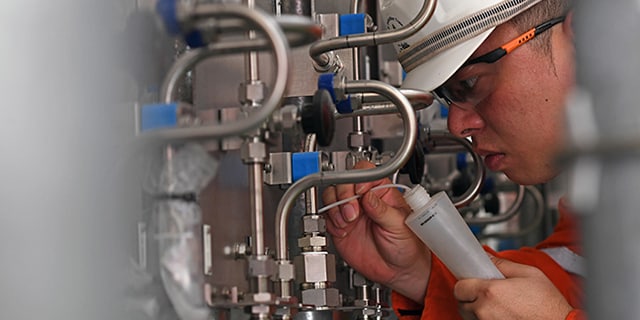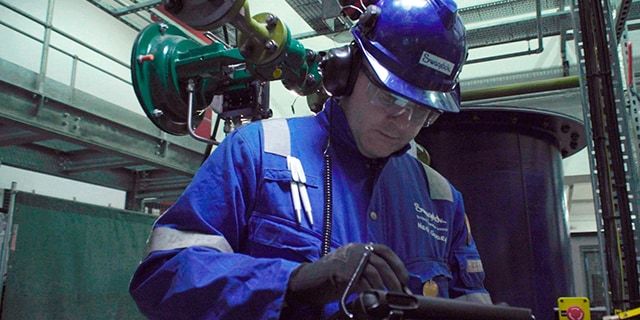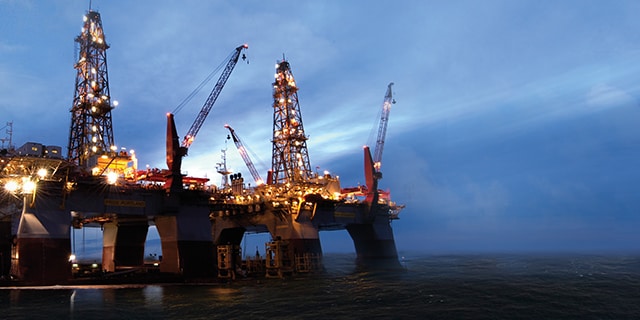How Mechanical Grip Fittings Can Optimize Oil and Gas Assets

Swagelok® FK Series Fittings Versus Cone and Thread Fittings: Understanding the Differences and Benefits

Cone and thread fittings have been a reliable choice for a variety of oil and gas applications for years. When used with special antivibration glands and installed by knowledgeable and experienced technicians, these fittings deliver reliable performance in medium-pressure applications.
The stakes are high in applications where cone and thread fittings are commonly found. Leaks or failures can lead to unplanned maintenance, increased expenditures, and numerous environmental health and safety risks. Since offshore oil and gas owners and operators are under intense pressure to ensure safety and environmental compliance, while containing costs and optimizing efficiencies, oil and gas fittings that leak or are otherwise faulty can lead to serious challenges.
With all of this in mind, oil and gas operators should be thorough when evaluating the pros and cons of their choice of fittings. For example, cone and thread fittings can be labor-intensive and time-consuming for installers. And, if installed without antivibration glands or by an inexperienced technician, the cone and thread fitting can leak far earlier than anticipated. Modern alternatives, however, may provide some advantages. Medium-pressure mechanical grip fittings, like Swagelok® FK Series Fittings, can offer a simpler and faster installation process for many critical oil and gas applications.
Certain medium-pressure fittings can be used nearly anywhere cone and thread fittings are traditionally specified, including chemical injection skids, wellhead control panels, umbilical termination units, hydraulic power systems, and more. When installed per the manufacturer’s instructions, they can offer significant operational benefits and efficiencies. In this post, we’ll explore why they may be an attractive option for your next project.
Optimized Installation
FK series fittings can be installed faster than cone and thread fittings, primarily because they:
 Require Fewer Tools.
Require Fewer Tools.
Cone and thread fittings require specialized tools and materials to complete an installation, including specific coning and threading tools, and cutting lubricant to reduce friction during the cutting process. FK series fittings, on the other hand, can be installed using a simple everyday wrench and vise.
Offer Quick-Fitting Installation.
Both FK series and cone-and-thread-style fittings must be square-cut and deburred, but the remainder of the installation process differs significantly. Before cone and thread fittings are joined, each must be coned and threaded properly using the necessary tools, making sure no burrs, gouges, or scratches occur during the process. Once the tubes are prepped, a collar is threaded onto the tubing and a gland nut is inserted into the fitting body to hold things securely in place.
FK series fittings reduce installation time by 5x, saving topside asset manufacturers thousands of dollars on each project.
In contrast, FK series fittings are installed by threading a preassembled cartridge (which includes a nut, two ferrules, and a plastic arbor) onto the fitting body. The tubing is then inserted and marked to establish alignment, and a single 360-degree turn completes the connection. Once checked with a gap inspection gauge to ensure a tight fit, the fitting is complete and ready for use.
This video provides a side-by-side comparison of a compression fitting installation versus a cone and thread fitting installation.
Consider this real-world comparison example. Imagine fabricating a medium-pressure skid package for an offshore oil and gas topside application. The skid requires 316 stainless steel tubing and fittings, and a single trained installer will make up each of the skid’s 500 connections.
The total time to complete the skid’s 500 fitting connections.

2,000 minutes with
FK series fittings

10,000 minutes with
cone and thread
The time it takes to complete either fitting type will depend on tubing diameter, material type, and the skill and experience levels of the installer. For this example, assume the FK series compression fitting takes four minutes to complete start to finish and the cone and thread fitting takes 20 minutes (five times longer). Therefore, the total time to complete the skid’s 500 fitting connections with FK series fittings is approximately 2,000 minutes (33.3 hours) compared to a much longer 10,000 minutes (166.7 hours) for cone and thread fittings. The difference is significant.
When installing cone and thread fittings, the potential for contamination is another factor to keep in mind. Between the metallic shavings resulting from the coning and threading process and the use of cutting lubricants, cone and thread assembly can become messy. Excess residue on the shop floor can lead to a potential safety risk, while contamination from metal shavings poses a risk to overall system performance. Replacing coning and threading with the use of certain medium-pressure fittings alleviates many of these concerns, which may ultimately save you time and money.
Long-Term Performance and Reliability
Cone and thread fittings installed with special antivibration glands, nuts, and collars can deliver improved performance when installed by a skilled, experienced technician. However, the supplemental glands, nuts, and collars are not always specified, and system performance has the potential to suffer as a result.
FK series fittings require almost no rework due to their simple installation and error-proof assembly.
Due to their preassembled cartridge design, FK series fittings do not require these supplemental components. Meanwhile, this preassembly makes them less prone to manual installation errors and more likely to maintain leak-tight performance with no repeat maintenance throughout their lifetime. Cone and thread fittings, on the other hand, can loosen over time due to vibrations that occur during transport to the job site or operation. Often, manual tightening can restore a leak-tight connection, but additional maintenance costs add up quickly.

While both fitting types can be disassembled and reassembled for system maintenance, reassembling a cone and thread fitting is not always repeatable or reliable. With FK series fittings, however, reassembly has been validated for many rebuild cycles.
***
Overall, FK series medium-pressure fittings can deliver significant benefits to topside asset owners and fabricators in the oil and gas space. By reducing installation time, lowering assembly and maintenance costs, and providing a more reliable and robust connection resulting in increased uptime, their use can help save thousands of dollars per project.
Interested in learning more about FK series fittings? Read our white paper about how to optimize your oil and gas assets with the right fitting technology.
Related Articles

Reducing Costly Fluid System Leaks and Emissions
Leaks can cause trouble in any process-driven industrial facility. Learn how to reduce common costly fluid system leaks, including fugitive emissions, with the right high-quality products and services.

3 Reasons to Audit Your Offshore Fluid System
Evaluation and advisory services for your offshore platform can reveal hidden leaks or other potential safety and performance issues.

Employing Medium-Pressure Ball Valves for Offshore HPUs
See how Ocean Edge Services used FKB series ball valves by Swagelok to engineer hydraulic power units (HPUs) that are ruggedly built for the people who do the work.


